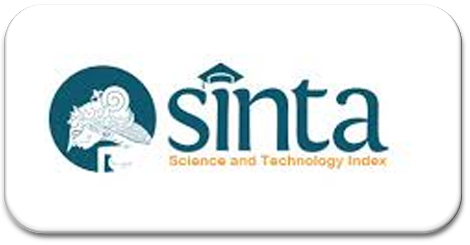KEMATANGAN KARIR SISWA SMU BANDA ACEH DITINJAU DARI JENIS KELAMIN DAN JENIS SEKOLAH
Abstract
Full Text:
PDFReferences
Aquila. (2012). Perbedaan Pengalaman Praktek Kerja Lapangan Pada Siswa SMA-SMK dan Status Keputusan Karir Terhadap Kematangan Karir. Tesis. Fakultas Psikologi: Universitas Indonesia.
Ayuni, A. N., (2015). Kematangan Karir Siswa Kelas XI Ditinjau dari Tingkat Pendidikan Orang Tua dan Keadaan Ekonomi Keluarga Di SMA Negeri 1 Pakem Tahun Ajaran 2014/2015. Skripsi. Fakultas Ilmu Pendidikan: Universitas Negeri Yogyakarta.
Azwar, S. (2010). Metode Penelitian. Yogyakarta: Pustaka Pelajar.
Azwar, S. (2012). Reliabilitas dan Validitas. Yogyakarta: Pustaka Pelajar.
Azwar, S. (2013). Penyusunan Skala Penelitian. Yogyakarta: Pustaka Pelajar.
Badan Pusat Statistik. (2015). Pengangguran Menurut Pendidikan Tertinggi Yang Ditamatkan. Jakarta: Badan Pusat Statistik
Badan Pusat Statistik. (2016). Jumlah Sekolah, Guru, dan Murid Sekolah Menengah Kejuruan (SMK) di Bawah Kementrian Pendidikan dan Kebudayaan Menurut Provinsi. Jakarta: Badan Pusat Statistik
Badan Pusat Statistik. (2016). Jumlah Sekolah, Guru, dan Murid Sekolah Menengah Atas (SMA) di Bawah Kementrian Pendidikan dan Kebudayaan Menurut Provinsi. Jakarta: Badan Pusat Statistik
Baron, R. A.,,& Byrne, D. (2004). Psikologi Sosial. Jakarta: Erlangga
Brown, D. (2002). Career Choice and Development. USA: A Wiley Imprint
Flouri. E. & Buchanan, A. (2002). The role of work-related skills and career role models in adolescent career maturity. The career development quarterly: (51) 1, 36-43
Gladiarthi, D. S. 2010. Perbedaan Kematangan Karir Pada Siswa SMA dan SMK. Tesis. Fakultas Psikologi: Universitas Muhammadiyah Malang
Hasan, B. (2006). Career Maturity of Indian Adolescents as a Function of Self-Concept, Vocational Aspiration and Gender. Journal of the Indian Academy of Applied Psychology. 32 (2), 127-134.
Ichsan, S. N., Alfiani. A., Rahastri. V., Prihandini. H., Christina. D. (2015). Perbedaan Dimensi Pemilihan Karir Protean. Management Dynamics Conference. Universitas Negeri Semarang.
Idrus, M. (2009) Metode Penelitian Ilmu Sosial Pendekatan Kualitatif dan Kuantitatif. Jakarta: Penerbit Erlangga.
Kerka, S. 1998. Career Development and Gender, Race, and Class.ERIC Digest, 1998.
King, S. (1989). Sex Differences in a Causal of Model of Career Maturity. Journal of Counseling and Development. 68, 208-215
Kusnadi, S. H. (2010). Perbedaan Perencanaan Karir Siswa SMK dan SMU. Skripsi. Fakultas Psikologi: Universitas Muhammadiyah Surakarta.
Levinson, E. M., Ohler, D. L., Caswell, S., Kiewra, K. (1998). Six Approaches to the Assessment of Career Maturity. Journal of Counseling and Development. 76 (4), 475-482
Mardiyati, B. D., Yuniawati, R. (2015). Perbedaan Adaptabilitas Karir Ditinjau Dari Jenis Sekolah (SMA dan SMK). Empathy. 3 (1) 31-41
Naidoo, A.V. (1998). Career maturity: a review of four decades of research. Bellville, South Africa: University of the Western Cape.
Papalia D. E., Olds, S. W, & Feldman, R. D. (2009). (Edisi 9). Human Development (Psikologi Perkembangan). Jakarta : Salemmba Humanika.
Patton, W. A., & Creed, P. A. (2001). Developmental issues in careeer maturity and career indecision status. The Career Development Quarterly. 49 (4), 336-351.
Patton, W., & Lokan, J. (2001) Perspectives on Donald Super’s Construct of Career Maturity.International Journal for Educational and Vocational Guidance1(2), 31-48.
Pinasti, W. (2011). Pengaruh Self-Efficacy, Locus Of Control, dan Faktor Demografis Terhadap Kematangan Karir Mahasiswa. Skripsi. Fakultas Psikologi. Universitas Islam Negeri Syarif Hidayatullah Jakarta.
Prahesty, I. D., Mulyana, O. P. (2013). Perbedaan Kematangan Karir Siswa Ditinjau Dari Jenis Sekolah. Character. 2 (1), 1-7
Priyatno, D. (2011). Buku Saku SPSS. Penerbit MediaKom, Yogyakarta.
Pusat Data dan Statistik Pendidikan. (2012). Indonesia Statistic In Brief 2011/2012. Indonesia: Badan Pusat Statistik.
Santrock, J. W. (2007). (Edisi 11). Perkembangan Anak. Jakarta: Erlangga.
Sukardi. (2013). Metodologi Penelitian Pendidikan. Jakarta: Sinar Grafika Offset
Suryanti, R., Yusuf, M., & Priyatama, A. N. (2011). Hubungan Antara Locus of Control Internal dan Konsep Diri dengan Kematangan Karir Pada Siswa Kelas XI SMK Negeri 2 Ssurakarta. Jurnal Wacana Psikologi. 3 (5), 1-18
Sugiyono. (2013). Metode Penelitian Pendidikan Pendekatan Kuantitatif, Kualitatif, dan R&D. Bandung: ALFABETA
Sunyoto. (2007). Perluasan Sekolah Menengah Kejuruan Dan Implikasinya Terhadap Kebutuhan Guru. Lembaran Ilmu Pendidikan. 36 (2), 146-156
Taylor, S.E., Peplau, L.A., & Sears, D.O. (2009). (Edisi 12). Psikologi Sosial. Jakarta: Kencana Prenada Media Group
Thompson, A. S., Lindeman, R. H., Super, D. E., Jordaan, J. P., Myers, R. A. (1981). Career Development Inventory. Columbia University
Umaedi, Hadiyanto, Siswantari. (2008). Manajemen Berbasis Sekolah. Jakarta: Universitas Terbuka
Wahyuni, D., Utami, H. N., Ruhana, I. (2014). Pengaruh Pengembangan Karir Terhadap Prestasi Kerja Karyawan. Jurnal Administrasi Bisnis. 8 (1) 1-10
Wijaya, F. (2012). Hubungan Antara Kematangan Karir dengan Motivasi Belajar pada Siswa Kelas X MAN Cibinong.
Winkel W.S & Hastuti, Sri. (2006). Bimbingan Dan Konseling Di Institusi Pendidikan. Yogyakarta: Media Abadi.
Yusanti, G. (2015). Hubungan Antara Dukungan Sosial Dengan Kematangan Karir Pada Siswa Sma di Kota Bogor. Thesis. Fakultas Psikologi. Univesitas Bina Nusantara
Zunker, V. G. (2006). (Edisi 7) Career Counseling a Holistic Aproach. Belmont: Brooks and Cole
DOI: http://dx.doi.org/10.22373/psikoislamedia.v1i2.918
Refbacks
- There are currently no refbacks.
Copyright (c) 2017 Dina Naulina Marpaung, Nucke Yulandari
Published by Faculty of Psychology UIN Ar-Raniry
Journal Secretariat:
Jl. Syeikh Abdur Rauf, Fakultas Psikologi, Kopelma Darussalam UIN Ar-Raniry, Banda Aceh, 23111,
e-mail: [email protected]
INDEXED BY:

This work is licensed under a Creative Commons Attribution-ShareAlike 4.0 International License.





_(1).png)
1_(1).png)
_(1).png)








.png)